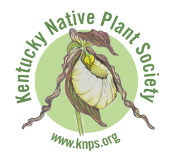
Wildflower Week 2021 is shaping up to be an amazing series of native plant related activities. The centerpiece of the week will be our community science project, the 2021 BotanyBlitz. From Saturday, April 10, through Saturday, April 17, we are encouraging everyone to visit parks and natural areas throughout the Commonwealth, find and photograph plants, with an emphasis on natives in bloom, and upload them to the KNPS Wildflower Week 2021 BotanyBlitz project.

A botany blitz is an event where anyone who joins the project on iNaturalist can use a camera (or cellphone) to snap a picture of a plant, in a given area (in this case all of Kentucky), during a given time frame (in this case April 10-17), and then upload the image (called an Observation) to their iNaturalist account. At the end of the week, we will have a gallery, a map showing the locations, and totals by numbers, species, and by each person, of all the great plants we found! Expert botanists and people with a keen identifying eye will be able to add comments to your specimens on why they agree or disagree with a certain identification, so we can all learn better ways to ID plants in the future.
If you do not have an iNaturalist account, please consider setting one up and then joining the BotanyBlitz project. It’s easy and fun and each observation contributes to our knowledge of the plants of Kentucky. Nick Koenig recently wrote an article showing the simple steps to join iNaturalist and the BotanyBlitz project and a short video of how to make and upload an observation. Check it out HERE!.
If you are not already familiar with iNaturalist, take a look at the site and some of KNPS’ other projects, such as the Kentucky Botanists Big Year 2021.
We are hoping that we can get at least one observation from every county in Kentucky. Won’t you join us and show the rest of us what native plants are blooming in your county?



